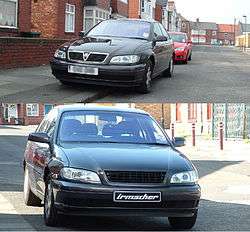Debadging

The term Debadging refers to the process of removing the manufacturer's emblems from a vehicle. Common emblems to be removed include the main manufacturer logo as well as the emblems designating the model of the vehicle.
Often debadging is done to complement the smoothed-out bodywork of a modified car, or to disguise a lower-specification model. Some people consider, when driving high-end luxury cars, to not "flaunt" the fact their car is any different from any other model and remove the badge. It is a common request for purchasers of high-end models of cars like BMW, Mercedes, Lexus, etc to have the emblems removed. Many automotive enthusiasts also believe that debadging a vehicle makes it easier to clean. This is because manufacturer badges are notorious for trapping wax, which is difficult to remove from small crevices. Also, sleepers sometimes are debadged to disguise any subtle evidence of a high performance vehicle.
Another common reason for debadging is to rid the car of its commercial advertising. Drivers are not being paid to advertise the brand so some decide to remove this commercial aspect of the vehicle.
While most modern vehicle emblems are attached with adhesive and can be easily removed, some emblems require varying degrees of bodywork to fill in voids and mounting holes left behind.
Debadging can also refer to the process of removing the car manufacturer's logo from the front grille. The result is a car widely considered to appeal more to car enthusiasts. The grill is often replaced by a plain grille, or a grille from another make and model of car altogether or one showing the more subtle logo of an aftermarket manufacturer such as ABT, Irmscher or Kamei. This is a common customising technique on leadsleds and kustoms, which dates back to the 1940s. For example, a Vauxhall Astra could have a grille swapped in from a Saab or a Jaguar E-type and be shaved of all trim.